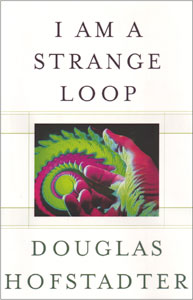By Douglas Hofstadter, Basic Books. Hardback ISBN 9780465030781, £15.99 ($26.95).
Douglas Hofstadter is a truly exceptional person. His remarkable academic life followed a path that reflected his evolving interests in mathematics (graduation in 1965), physics (PhD in 1975), and cognitive sciences (his main field of research ever since). He is also captivated by literature, music, philosophy and other forms of high-level human creativity – probably because they are particularly beautiful expressions of consciousness, a more elusive activity that somehow emerges from within our “thinking machine”, the brain.

Hofstadter is best known for having written Gödel, Escher, Bach: an Eternal Golden Braid (GEB), undoubtedly an inspired masterwork that was immediately recognized as a breakthrough in scientific literature. Despite being a brilliant and original work, most readers of GEB might feel uneasy when asked to summarize in a few sentences the main message of this unusual “metaphorical fugue on minds and machines in the spirit of Lewis Carroll”, which lasts for 777 (plus 22) pages. This is not a criticism. Many works of art can be appreciated, enjoyed and admired, even if we fail to grasp the main idea inspiring the artist. Maybe revolutionary breakthroughs – in art and certain areas of science – are naturally difficult to master at first and remain somewhat foggy in the minds of the “amateur”. In any case, GEB is certainly at the top of the list of books that I would take with me to a desert island. It has enough content and structure – not to mention depth and broadness – to provide thought-provoking reading for a very long time, and being alone on a desert island is an ideal setting for asking what we mean when we say “I”. Frankly, I’ve never read GEB in its full extent, from cover to cover. I prefer to see it as a collection of great wonders that visitors can enjoy in several possible sequences, even skipping a few of them. It’s impossible to visit all “great wonders of the world” in a single lifetime.
This browsing attitude (jumping back and forth between chapters and sections) or even opening the book at a random page and enjoying a few pages, is probably a good indication that I am one of the many readers who Hofstadter had in mind when he grumbled that GEB has been misperceived as “a hodgepodge of neat things with no central theme”. Apparently, this was one of the factors that triggered him to embark on the braiding of I Am a Strange Loop – 432 pages devoted to the “I” theme, 28 years after the eternal golden braid of GEB. I presume he would have finished much earlier had he not become a victim of his own (recursive) Hofstadter’s Law: It always takes longer than you expect, even when you take into account Hofstadter’s Law. I would also have written this review long ago, if I were not an enthusiast of this law…
In this more recent work, Hofstadter revisits several of GEB’s topics, such as Gö:del’s inspiring work on self-referential systems and “self-engulfing TV screens”, now magnificently represented in colour and with higher resolution than before, which provide a striking illustration of a self-referential loop (despite the absence of the “black hole” seen in the original screenings). However, the new book focuses on the scientific, philosophic and spiritual issues related to the ever-elusive nature of mind and consciousness. The author recognizes this as a daunting task: “our very nature is such as to prevent us from fully understanding its very nature.”
GEB’s emblematic actors (Achilles, Tortoise and other mythical characters who had metaphorical dialogues interspacing the main chapters) are absent in I Am a Strange Loop, giving it a seemingly more relaxed fluidity and somewhat reducing the “hodgepodge” feeling. The feeling is not entirely gone, however, and we can use another of Hofstadter’s pictorial expressions to qualify it as “a random-looking swirl of pockmarked, bluish-white globs that reminded me a bit of some kind of exotic cheese…”.
Like the topic it addresses, I Am a Strange Loop has elusive parts and hard-to-follow concepts, but it retains a surely poetic (even beautiful) literary exquisiteness, providing delightful reading that I do not remember experiencing with any other scientific book. I wholeheartedly recommend it to anyone interested in “the mind’s I” and to those looking for a scientific book written at the highest literary level. A warning, though: you may want to have a good English dictionary within arm’s reach. I should also recommend reading The Mind’s I by Hofstadter and Daniel Dennett, another delightful selection of “fantasies and reflections on self and soul”, which will trigger your mind into wondering “what is the mind, who am I, can machines think?”, through extraordinary stories and disturbing commentaries.







